#pete walker
Text
“The rejecting responses of our parents to our emotional expression alienate us from our feelings. Emotional abuse/neglect scares us out of our own emotions while simultaneously making us terrified of other people's feelings.“
— Pete Walker, Complex PTSD From Surviving to Thriving
(Note: Remove "parents" and replace it with "peers" and this would still make sense imo. One thing I noticed is that a lot of psychology books focus on the relationship between child and parents, but rarely ever branch out to consider what being abused by peers can do to a developing child.)
#complex ptsd#cptsd#trauma#racial trauma#bullying#peer abuse#mental health#avoidance#avpd#quotes#pete walker
123 notes
·
View notes
Text
On January 27, 1984, House of the Long Shadows debuted in Indianapolis, Indiana.
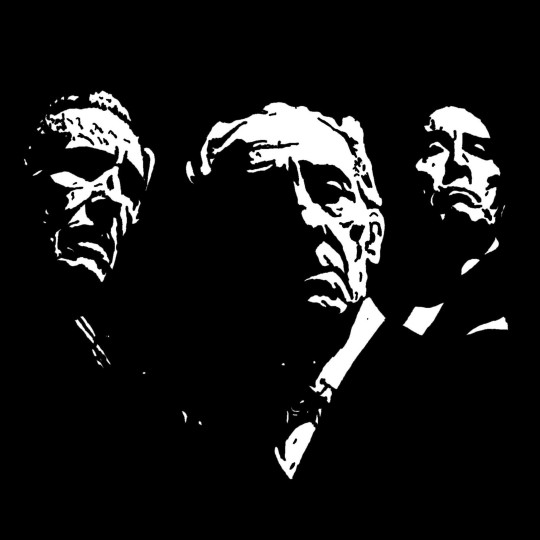
#house of the long shadows#pete walker#vincent price#peter cushing#christopher lee#horror#horror movies#horror art#horror film#cult cinema#elvira's movie macabre#cannon films#midnight movies#movie art#art#drawing#movie history#pop art#modern art#pop surrealism#cult movies#portrait#cult film
30 notes
·
View notes
Text

House of Mortal Sin (1976) - Italian Poster
#house of mortal sin#susan penhaligon#anthony sharp#stephanie beacham#1976#1970s movies#1970s horror#pete walker#horror movie poster
30 notes
·
View notes
Text
I'm reading Pete Walker's Complex PTSD at the moment and it IS taking me to pieces and I AM reluctantly doing my best to clean those pieces, lube them up with self-compassion, and put them back together.
HOWEVER.
One failing of the book (which, really i can't recommend highly enough. You should totally read it) is the assumption that you only get CPTSD in childhood if your parents are like. Mean. My mother is wonderful actually she's just poor.
25 notes
·
View notes
Text



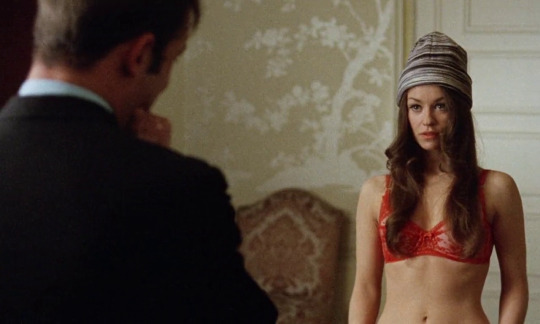

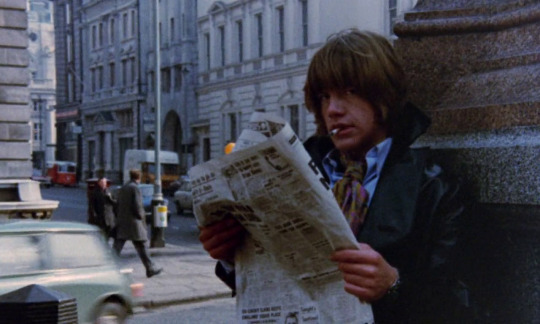
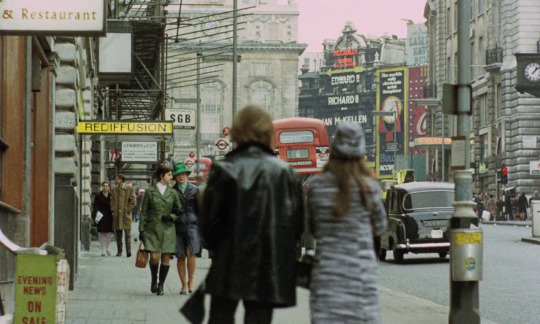

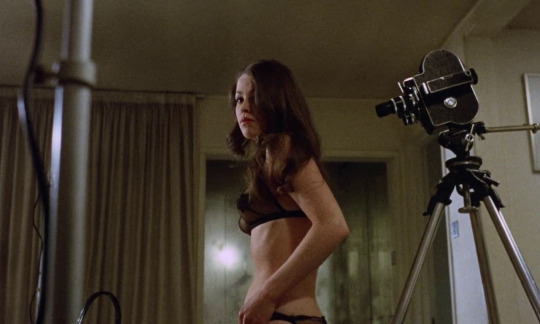

Cool it Carol! - Pete Walker - 1970 - UK
27 notes
·
View notes
Text
There was no more detrimental consequence of our childhood abandonment than being forced to habitually hide our authentic selves. Many of us come out of childhood believing that what we have to say is as uninteresting to others as it was to our parents. We must repudiate this damaging legacy of the past.
Pete Walker
86 notes
·
View notes
Text
14 common inner critic attacks
Here is a list of 14 common inner critic attacks divided into the key categories of perfectionism and endangerment. Each is paired with a healthier (and typically more accurate) thought-substitution response. Click here for the PDF version.
Perfectionism My perfectionism arose as an attempt to gain safety and support in my dangerous family. Perfection is a self-persecutory myth. I do not have to be perfect to be safe or loved in the present. I am letting go of relationships that require perfection. I have a right to make mistakes. Mistakes do not make me a mistake. Every mistake or mishap is an opportunity to practice loving myself in the places I have never been loved.
All-or-None & Black-and-White Thinking I reject extreme or overgeneralized descriptions, judgments or criticisms. One negative happenstance does not mean I am stuck in a never-ending pattern of defeat. Statements that describe me as “always” or “never” this or that, are typically grossly inaccurate.
Self-Hate, Self-Disgust & Toxic Shame I commit to myself. I am on my side. I am a good enough person. I refuse to trash myself. I turn shame back into blame and disgust, and externalize it to anyone who shames my normal feelings and foibles. As long as I am not hurting anyone, I refuse to be shamed for normal emotional responses like anger, sadness, fear and depression. I especially refuse to attack myself for how hard it is to completely eliminate the self-hate habit.
Micromanagement/Worrying/Obsessing/
Looping/ Over-Futurizing I will not repetitively examine details over and over. I will not jump to negative conclusions. I will not endlessly second-guess myself. I cannot change the past. I forgive all my past mistakes. I cannot make the future perfectly safe. I will stop hunting for what could go wrong. I will not try to control the uncontrollable. I will not micromanage myself or others. I work in a way that is “good enough”, and I accept the existential fact that my efforts sometimes bring desired results and sometimes they do not. “God grant me the serenity to accept the things I cannot change, the courage to change the things I can, and the wisdom to know the difference” - The Serenity Prayer
Unfair/Devaluing Comparisons To others or to one’s most perfect moments. I refuse to compare myself unfavorably to others. I will not compare “my insides to their outsides”. I will not judge myself for not being at peak performance all the time. In a society that pressure us into acting happy all the time, I will not get down on myself for feeling bad.
Guilt Feeling guilty does not mean I am guilty. I refuse to make my decisions and choices from guilt; sometimes I need to feel the guilt and do it anyway. In the inevitable instance when I inadvertently hurt someone, I will apologize, make amends, and let go of my guilt. I will not apologize over and over. I am no longer a victim. I will not accept unfair blame. Guilt is sometimes camouflaged fear. – “I am afraid, but I am not guilty or in danger”.
"Shoulding” I will substitute the words “want to” for “should” and only follow this imperative if it feels like I want to, unless I am under legal, ethical or moral obligation.
Overproductivity/Workaholism/Busyholism I am a human being not a human doing. I will not choose to be perpetually productive. I am more productive in the long run, when I balance work with play and relaxation. I will not try to perform at 100% all the time. I subscribe to the normalcy of vacillating along a continuum of efficiency.
Harsh Judgments of Self & Others/Name-Calling I will not let the bullies and critics of my early life win by joining and agreeing with them. I refuse to attack myself or abuse others. I will not displace the criticism and blame that rightfully belongs to them onto myself or current people in my life. “I care for myself. The more solitary, the more friendless, the more unsustained I am, the more I will respect myself”. - Jane EyreENDANGERMENT ATTACKS
Drasticizing/Catastrophizing/Hypochondrisizing I feel afraid but I am not in danger. I am not “in trouble” with my parents. I will not blow things out of proportion. I refuse to scare myself with thoughts and pictures of my life deteriorating. No more home-made horror movies and disaster flicks.
Negative focus I renounce over-noticing & dwelling on what might be wrong with me or life around me. I will not minimize or discount my attributes. Right now, I notice, visualize and enumerate my accomplishments, talents and qualities, as well as the many gifts Life offers me, e.g., friends, nature, music, film, food, beauty, color, pets, etc.
Time Urgency I am not in danger. I do not need to rush. I will not hurry unless it is a true emergency. I am learning to enjoy doing my daily activities at a relaxed pace.
Disabling Performance Anxiety I reduce procrastination by reminding myself that I will not accept unfair criticism or perfectionist expectations from anyone. Even when afraid, I will defend myself from unfair criticism. I won’t let fear make my decisions.
Perseverating About Being Attacked Unless there are clear signs of danger, I will thought-stop my projection of past bully/critics onto others. The vast majority of my fellow human beings are peaceful people. I have legal authorities to aid in my protection if threatened by the few who aren’t. I invoke thoughts and images of my friends’ love and support.
Source: Pete Walker in "Complex PTSD: From Surviving to Thriving"
#soft life#black femininity#manifestingmindset#self development#hypergamyblr#feminine energy#black women in leisure#black women in femininity#hypergamous#childhood trauma#ptsd#cptsd#pete walker#inner critic#shadow work#becoming that girl#becoming her
38 notes
·
View notes
Text
''A fawn type/codependent is usually the child of at least one narcissistic parent. The narcissist reverses the parent-child relationship. The child is parentified and takes care of the needs of the parent, who acts like a needy and sometimes tantruming child.
When this occurs, the child may be turned into the parent’s confidant, substitute spouse, coach, or housekeeper. Or, she may be pressed into service to mother the younger siblings. In worst case scenarios, she may be exploited sexually.
Some codependent children adapt by becoming entertaining. Accordingly, the child learns to be the court jester and is unofficially put in charge of keeping his parent happy.
Pressing a child into codependent service usually involves scaring and shaming him out of developing a sense of self. Of all the 4F types, fawn types are the most developmentally arrested in their healthy sense of self.''
-Pete Walker, Complex PTSD: From Surviving to Thriving
13 notes
·
View notes
Text

COMPLEX PTSD: From Surviving to Thriving Pete Walker
42 notes
·
View notes
Text
X-Files Scully Trauma Responses: Fight, Flight, Freeze, or Fawn?
Picking up from this post about Mulder, we have Scully's turn!
There are four main trauma responses: Fight, Flight, Freeze, and Fawn (taken from the book Complex CPTSD: From Surviving to Thriving by Pete Walker-- see Disclaimers section below for info.) In short: Fight Types respond to stress with physical intimidation or verbal bullying; Flight Types run as far as they can from danger (physically or metaphorically), fleeing or distracting their minds with obsessive-compulsive work; Freeze Types disassociate, seeing fight and flight as futile and becoming numb to life; and Fawn Types try to win favor from their oppressor, leaning co-dependently on others.
Scully's Primary Trauma Response Type
Flight Types



"A Flight response is triggered when a person responds to a perceived threat by fleeing; or, symbolically, by launching into hyperactivity. .... Extreme Flight types are like machines with a switch stuck in the 'on' position. They are obsessively and compulsively driven by the unconscious belief that perfection will make them safe and loveable. They rush to achieve. They rush as much in thought in action, compulsion."
Beyond the Sea explored the breadth of Scully's Flight Type Trauma Response: Scully tried to avoid the pain of her father's death by distracting herself with work before the funeral; but was forced to sit in her feelings of inadequacy and beg for reassurance of his fatherly pride from her mother. "Was he at all proud of me?" is the backbone of her type, just as it was in relation to her partnership with Mulder, her daughterly duties to Maggie, her sisterly duties to Bill, and her professional duties as a medical doctor, Academy instructor, and field agent. Furthermore, this episode laid the groundwork for the infamous hallway scene in Fight the Future. As Rob Bowman stated: "‘I need you, I need you.’ That’s a theme of the movie – Mulder needs Scully. And never before has he come to that understanding quite so strongly as he does in this story. So she’s running because she’s afraid that he’s going to talk her out of it, and so the best thing she can do is hit the elevator button and go, go, go."
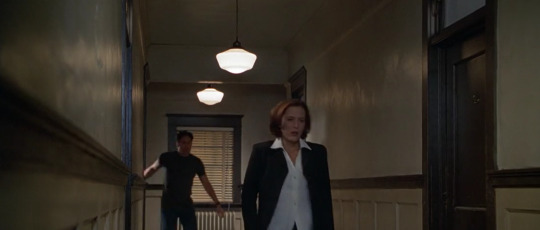
Classic Flight Type, classic.
(An interesting note: As stated above, Scully's "machine" is stuck in the "on" position-- the exact opposite of Mulder's type, which is stuck in the "off" position. Scully's traumatic response is to bury herself in obsessive-compulsive disordered behavior to distract from the lack of control she has over her life--finding refuge in long-working hours or needlessly consuming chores-- after her father's death, Emily's death, Mulder's disappearance and death, her mother's death, her son's fake death, etc. While Scully seeks out tasks, people, and duties from life (a.k.a. whether that be her on-the-clock job or extra busywork on weekends and holidays), Mulder retreats from people during his traumatic responses, becoming reclusive and alienated, dungeonIng himself away from life in his basement or leather couch.)
But what if her primary trauma response isn't working fast enough to combat fear or danger? In this case, Scully will develop a secondary trauma response, the polar opposite of her dominant one:
Flight-Fawn Types



Flight-Fawn Types (also known as Super Nurses, ironically) turn the obsessive-compulsive workaholism of the Flight Type into the bend-over-backwards self-imposed slavery of the Fawn Type. As Pete Walker explains: "The Fawn-Flight Type is the most typically seen in the busy-holic parent, nurse, or administrative assistant who works from dawn until bedtime providing for the needs of the house, the hospital, or company. He" [she] "compulsively takes care of everyone else's needs with hardly a gesture towards his own. The Fawn-Flight is sometimes a misguided Mother Theresa-type who escapes the pain of her self-abandonment by seeing herself as the perfect, selfless caregiver. She further distances herself from her own pain by obsessively-compulsively rushing from one person in need to another. Some Fawn-Flight clients become OCD-like clean-aholics."
As we know, Scully fashions herself as Mulder's partner, primary caretaker, and right-hand Starbuck, while also acting as his translator, justifier, and report writer to the higher ups.
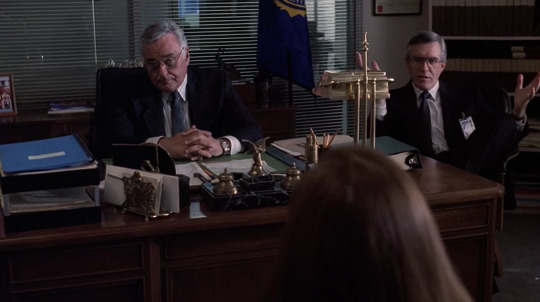
When Mulder messes up in all areas of his life, she flies in to patch him up and cover for him. This, of course, is fulfilling... but it's also distracting, purposefully so. Her Flight-Fawn Response also emerges its head whenever she tries to placate her brother Bill: cut off from Flight, she will utilize Fawn-- letting him ramble, pushing back only a little while pleading for understanding-- before ultimately volleying back to Flight whenever he gives her enough room to squeeze by and make her escape. Even on her last legs during the cancer arc, Scully still got swept up into verifying Mulder's quest against her previously expressed wishes--Flight-Fawn in full effect.
Why Scully Is Not Primarily Fight, Freeze, or Fawn
Fight Types

"A Fight response is triggered when a person suddenly responds aggressively to something threatening. ...Fight Types are unconsciously driven by the belief that power and control can create safety, assuage abandonment, and secure love...." Fight Types often become bullies or narcissists to their loved ones as well as their enemies if left unchecked. At their worst, they can become demanding, demeaning, and punishing because they equate strength as power exerted to weaken a threat. Fight is the first Trauma Response all humans develop; and if it's used effectively, Fight Responders stick to this "effective" method rather than trying out others (the second Flight, third Freeze, or fourth Fawn.) This translates to a bitter outlook on the world, always suspicioning the motives of others in cruel or judgmental ways. Severely traumatized Flight Types usually grew up in homes where they had to fight back against physical abuse or protect others from it. Dana Scully, while aggressive and cantankerous in the face of sniveling injustice, never uses her anger as a way to control or manipulate others; nor does she see other humans as self-interested threats.
Freeze Types

"A Freeze Response is triggered when a person, realizing resistance is futile, gives up, numbs out into dissociation, and/or collapses, as if accepting the inevitability of being hurt…. The Freeze Response, also known as the Camouflage Response, also triggers a survivor into hiding, isolating, and avoiding human contact. The Freeze Type can be so frozen in the retreat mode that is seems as if their "Starter” button is stuck in the “off” position. While all 4 F Types commonly suffer from social anxiety as well, Freeze Types typically take a great deal more refuge in solitude." These Types have learned from a young age that fighting back will only get you punished and that fleeing will only get you reprimanded; so, they collapse in on themselves instead. Dana Scully wields her independent agency freely and often, so this is definitely not her primary Type.
Fawn Types
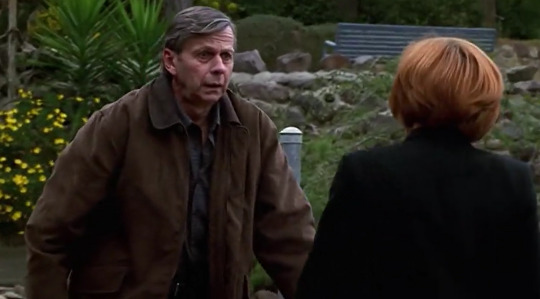
"Fawn response is triggered when a person responds to threat by trying to be pleasing or helpful in order to appease and forestall an attacker.... Fawn Types seek safety by merging with the wishes, needs, and demands of others. They act as if they believe that the price of admission to any relationship is the forfeiture of all their needs, rights, preferences, and boundaries. The disenfranchisement of the Fawn Type begins in childhood... learns early that a modicum of safety and attachment can be gained by becoming the helpful and compliant servant of... exploitive parents." (As an aside, this type is formed from having at least one narcissistic parent who beat wore down the first natural human response-- Fight-- the second response-- Flight-- and the third response-- Freeze-- until all that is left is Fawn.) Dana Scully has never kowtowed or cheaply sold her self-respect to appease to others; and has only ever dipped into the Fawn Response as a capitulation or bargaining tool, hence why it is her secondary and not primary response.
Thank you for reading~
Enjoy!
**Disclaimers: Most of the information was obtained from Complex PTSD: From Surviving to Thriving by Pete Walker, a private counselor and lecturer for thirty-five years. As a victim of CPTSD himself, he made a study of its victims and helped craft a system for CPTSD recoverees to understand themselves and progressively heal. (Highly recommend his book-- excellent.)
#txf#xf meta#x-files#xfiles#meta#the x files#Scully#Trauma Responses#Trauma Responses: Fight Flight Freeze Fawn#CPTSD#analysis#Complex PTSD: From Surviving to Thriving#Pete Walker
28 notes
·
View notes
Text
“The flight-freeze type avoids potential relationship-retraumatization with an obsessive-compulsive/dissociative "two-step." Step one is working to complete exhaustion. Step two is collapsing into extreme "veging out", and waiting until his energy reaccumulates enough to relaunch into step one. The price for this type of no-longer-necessary safety is a severely narrowed existence.”
— The Flight-Freeze Hybrid, Complex PTSD: From Surviving to Thriving by Pete Walker
45 notes
·
View notes
Text
“Perfection is a self-persecutory myth. I do not have to be perfect to be safe or loved in the present. I am letting go of relationships that require perfection. I have a right to make mistakes. Mistakes do not make me a mistake.”
― Pete Walker, Complex PTSD: From Surviving to Thriving
6 notes
·
View notes
Text
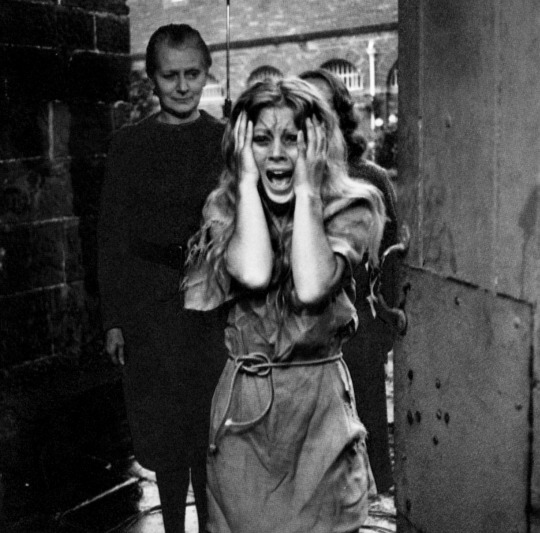
Dorothy Gordon, Penny Irving, and Sheila Keith in House of Whipcord (1974)
#house of whipcord#sheila keith#penny irving#dorothy gordon#1974#1970s horror#1970s movies#pete walker#horror
26 notes
·
View notes
Text



Quotes from "Complex PTSD" by Pete Walker
#This one goes out to my bestie who just posted a vent post on this topic#This one goes out to all the siblings who had nothing to give each other but pain#Who never learned healthy limits and how to respect each other#And most painfully! Those who did learn that later on. But it was too late by then.#pete walker#complex ptsd#Complex PTSD Pete Walker#I HAVE THE PDF I AM WILLING TO SHARE IT#me Fein#Trauma
10 notes
·
View notes
Text

Cool it Carol! - Pete Walker - 1970 - UK
13 notes
·
View notes
Note
I have cptsd but I don’t know a lot of my symptoms very well. Can you explain emotional flashbacks?
Emotional flashbacks are very similar to actual flashbacks, but without the image/audio/video/all (depends on the person).
It's an old feeling you get, from a traumatic event or something bad happened in your life.
This feeling pops up and it does feel so real. So we tend to think it's happening now, when it's not. That feeling, happened soooo long ago. It's weird, I know.
Not many people talk about them because many people (without therapy) have a hard time understanding, the difference between an actual flashback with audio/image/video/all to an emotional flashback. Since we tend to act upon them, instead of just letting our emotions loose and letting us feel them. Since, we had to survive, we couldn't let our emotions let loose because we lived in survival mode for so long. NOTHING WRONG WITH THAT. We had to do, what we had to do.
Here's some more info about them.

Lastly, I recommend this book by Pete Walker. He talks about CPTSD in depth, a great read. It's also in kindle and in audio, if that helps.
5 notes
·
View notes